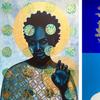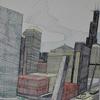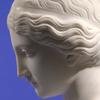First Comprehensive Exhibition Featuring China's 18th-Century Master Painter Luo Ping Goes on View at Metropolitan Museum October 6
- NEW YORK, New York
- /
- October 03, 2009
The first comprehensive exhibition of Luo Ping's paintings ever presented in America, Eccentric Visions: The Worlds of Luo Ping (1733-1799) will bring together nearly 60 works, including many Chinese "National Treasures," by one of the most celebrated painters in 18th-century China. Complemented by 27 pieces from American collections, this momentous international-loan exhibition will reveal the range and brilliance of the artist's vision as well as his place among his peers. Highlights of the exhibition will include the sensational handscroll Ghost Amusements (ca. 1766)—one of the best known paintings in the late imperial China—depicting the world of ghosts that, he claimed, he had seen with his own eyes. The youngest of the so-called "Eight Eccentrics," a group of highly individualistic artists active in the prosperous metropolis of Yanzhou, Luo Ping was an extraordinary artist, whose works influenced the course of later Chinese painting.
The exhibition is made possible by Credit Suisse.
Additional support is provided by The Miriam and Ira D. Wallach Foundation.
The exhibition was organized by the Museum Rietberg Zürich.
"Luo Ping was very much a man of his times," said Maxwell K. Hearn, Curator of the Department of Asian Art at the Metropolitan Museum, "And, being labeled an eccentric suggests that he exhibited the kind of individuality that we associate with western artists today. Luo faced issues of artistic integrity and patronage not so different from what contemporary artists must grapple with. This exhibition provides a rare opportunity to get to know a Chinese artist in all his complexity," he continued.
Extremely versatile—his oeuvre includes portraits, figure paintings, landscapes, and floral studies—Luo Ping embodies the vibrant diversity, complexity, and fin de siècle brilliance of the Qing dynasty (1644-1911) as it reached and passed its zenith. Featuring 27 works (94 images) by Luo Ping, the exhibition will trace his career from Yangzhou, China's leading commercial center, to Beijing, its political heart. The exhibition will also integrate a selection of eight works (45 images) by Jin Nong (1687-1763), Luo's teacher and an elder member of the "Eight Eccentrics of Yangzhou", and four works by Luo's wife, son, and daughter, in order to show a more unified view of the great master's legacy. The exhibition will conclude with a group of 17 works by other Yangzhou Eccentrics that elucidate the broader cultural context for Luo Ping's career.
Works on View
The exhibition opens with examples of Luo Ping's early work including his arresting and highly unconventional Portrait of Jin Nong (ca. 1760), capturing his beloved mentor as a Buddhist saint poring over a Sanskrit scripture. The unflattering characterization, verging on caricature, pointedly evokes grotesque 10th-century depictions of Luohans (disciples of the Buddha) that Jin Nong admired.
An adjacent gallery will present two albums by Jin Nong that served as poetic and pictorial models for the young Luo, who is said to have occasionally acted as a ghost painter for the older artist, who was much better known as a calligrapher.
A key monument in Luo Ping's efforts to establish his own artistic identity after his mentor's death was his Ghost Amusement. Painted in the later 1760s, Luo carried this long handscroll with him for his entire career collecting commentaries by all of the leading intellectuals of his time. Luo claimed to be able to see ghosts and he developed a unique way of capturing their likenesses by first dampening the paper before he began to draw, thus creating images defined by blurred lines that are eerily evocative of an ephemeral vision that he created.
Like Jin Nong, Luo was a devout Buddhist and a number of his paintings reflect this. One outstanding work is his iconic image of the Chan (Zen in Japanese) Buddhist masters Hanshan and Shide, whose unconventional behavior was seen as a manifestation of their lofty unworldliness. Luo's hanging scroll, dating from the 1770s, depicts the 8th-century hermit-poet Hanshan ("Cold Mountain") and the scullery boy Shide in a spontaneous ink wash manner evocative of the Chan practitioner's goal of "sudden enlightenment," Luo Ping's public success was accompanied by a particularly harmonious family life. At the age of 19, he married the poet and painter Fang Wanyi (1732–1779). Together with their children, the artist couple specialized in depictions of plum blossoms, a richly symbolic motif suggestive of renewal and moral purity. The exhibition will include some of the best examples of this subject, which was also a favorite of Jin Nong's.
Maxwell K. Hearn, Curator of the Department of Asian Art at the Metropolitan Museum, has observed: "The image of Luo Ping as revealed through these remarkable paintings is touchingly human. The artworks assembled here capture Luo's complex network of relationships: with his mentor and perhaps surrogate father figure Jin Nong (Luo was orphaned at an early age); with the circle of artists and scholarly patrons who shaped the intellectual discourse and artistic tastes of the time; and with his wife and children with whom he collaborated in the creation of a familial artistic identity."
About Luo Ping
Born in the city of Yangzhou in 1733, Luo Ping's literary and artistic talents attracted the interest of Jin Nong (1687–1763), an elder member of the "Eight Eccentrics of Yangzhou" and one of the leading figures in Yangzhou's bohemian culture. Jin accepted the 23-year-old Luo as his student, and the two men maintained an unusually close friendship until Jin's death seven years later.
In the latter part of his life, Luo Ping worked mostly in Beijing. Unlike the commercial center of Yangzhou, the Manchu empire's capital was culturally conservative and classical literary studies and evocations of past styles were the chief concerns of scholars and government officials. This intellectual environment had a powerful influence on Luo Ping, and his later paintings increasingly referred to historical styles and themes.
A range of educational programming will be offered in conjunction with the exhibition, including gallery talks and a "Sunday at the Met" lecture program on October 18.
The exhibition will be accompanied by a 300-page fully-illustrated catalogue featuring eight essays and detailed individual entries by some of the leading scholars in the field. The exhibition in New York will be organized by Maxwell K. Hearn and Shi-yee Liu, Research Associate in the Department of Asian Art, the Metropolitan Museum.
Exhibition dates: October 6, 2009-January 10, 2010Location: Galleries for Chinese Paintings and CalligraphyPress preview: Monday, October 5, 10 a.m. - noon
# # #
1000 Fifth Avenue
New York, New York
About Metropolitan Museum of Art
The Metropolitan Museum of Art is one of the world's largest and finest art museums. Its collections include more than two million works of art spanning 5,000 years of world culture, from prehistory to the present and from every part of the globe. Founded in 1870, the Metropolitan Museum is located in New York City's Central Park along Fifth Avenue (from 80th to 84th Streets). Last year it was visited by 5.2 million people.




10270x400_c.jpg)

















